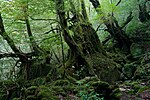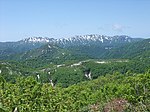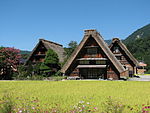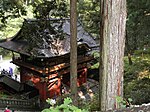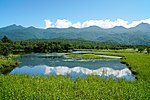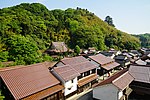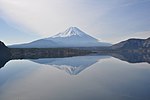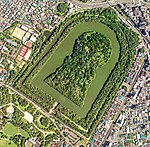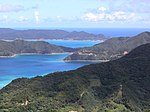List of World Heritage Sites in Japan
Location of World Heritage Sites within Japan
Japan accepted the UNESCO World Heritage Convention on 30 June 1992.[1] As of July 2021, twenty-five properties have been inscribed on the World Heritage List: twenty cultural sites and five natural sites.[1] A further five sites and one site extension have been submitted for future inscription and are currently on the Tentative List as of 2017.[1]
World Heritage Sites
Tentative list
The Tentative List consists of sites previously nominated, but not yet inscribed.
| Name | Image | Location | UNESCO data | Monuments (incomplete listing) |
|---|---|---|---|---|
Temples, Shrines and other structures of Ancient Kamakura |
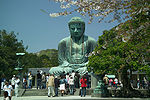 |
Kanagawa Prefecture | 370 (1992) iii, iv | Tsurugaoka Hachiman-gū, Jufuku-ji, Kenchō-ji, Zuisen-ji, Kōtoku-in, Kakuon-ji, Ruins of Buppō-ji, Ruins of Yōfuku-ji, Ruins of the Hokkedō, Ruins of the Hōjō Tokiwa Residence, Kamegayatsuzaka Pass, Kehaizaka Pass, Daibutsu Pass, Gokuraku-ji, Engaku-ji, Egara Tenjin Shrine, Jōkōmyō-ji, Asaina Pass, Ruins of Tōshō-ji, Nagoshi Pass, Shōmyō-ji, Wakae Island
|
| Hikone-jō |  |
Shiga Prefecture | 374 (1992) i, ii, iii, iv | Hikone Castle |
| Asuka-Fujiwara: Archaeological Sites of Japan's Ancient Capitals and Related Properties | 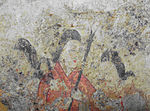 |
Nara Prefecture | 5097 (2007) ii, iii, iv, v, vi | Ishibutai Kofun, Takamatsuzuka Tomb, Kitora Tomb, Kawara-dera, Asuka-dera, Oka-dera, Yamada-dera, Fujiwara-kyō, Yamato Sanzan |
| The Sado complex of heritage mines, primarily gold mines | 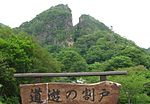 |
Niigata Prefecture | 5572 (2010) ii, iii, iv | Sado mines |
| Hiraizumi - Temples, Gardens and Archaeological Sites Representing the Buddhist Pure Land (extension) | 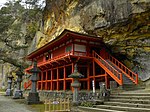 |
Iwate Prefecture | 5760 (2012) ii, iii, vi | Shirotori-tate Site, Takkoku-no-Iwaya, Yanagi-no-Gosho Site, Chojagahara Haiji Site, Honedera-mura Shoen Site |
Other UNESCO heritage lists
| UNESCO List | Exclusive Entries of Japan | Shared/Multinational Entries Involving Japan | Total |
|---|---|---|---|
| UNESCO World Network of Biosphere Reserves | 8 | — | 8 |
UNESCO World Heritage List |
22 | 1 | 23 |
UNESCO Memory of the World Register |
5 | 2 | 7 |
UNESCO Global Geoparks Network |
10 | — | 10 |
| UNESCO Creative Cities Network | 8 | — | 8 |
| UNESCO Intangible Cultural Heritage Lists | 24 | — | 24 |
See also
Wikimedia Commons has media related to World Heritage Sites in Japan.
- Cultural Properties of Japan
- National Treasures of Japan
- Cultural Landscapes of Japan
- National parks of Japan
- Kashimagari Tunnel
References
External links
- (in Japanese) World Heritage Sites in Japan
- (in Japanese) Database of National Cultural Properties - World Heritage (世界遺産)



